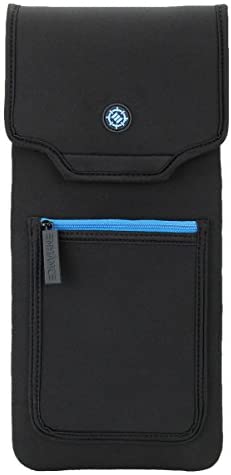Opinions expressed by Entrepreneur contributors are their own.
Have you ever found that despite putting hours of effort into your content and link-building initiatives, you still need help to rank for your targeted keywords? It may be time to revisit the topic of search intent.
Search intent is one of the most important aspects to consider whenever you’re trying to optimize your on-page content, carry out effective link-building, or do anything else related to SEO.
Let’s take a closer look at search intent’s role in SEO and how you can use it for more effective link-building strategies.
Related: 5 Simple SEO Methods That Produce Major Traffic for Small Businesses
Types of search intent
Google has dominated the search market over the years because it’s the best at serving its users the content they’re looking for. It’s essential to ensure the content you publish is not only related to the keywords you’re targeting but also offers a highly relevant solution to the problems searchers are facing. To give you a better idea of how this works in an SEO campaign, let’s take a look at the four main types of keyword intent:
Informational intent
One of the most commonly-targeted types of keyword intent, informational search intent, covers keywords used by people looking to answer a question or find a particular piece of information.
Keywords with informational intent are often keywords starting with “how,” “why,” “what,” etc. For example, the keyword “how to start a YouTube channel” will indicate that the user wants to learn about the process involved in starting a YouTube channel and possibly find some supporting advice on optimizing it for success.
Navigational Intent
Navigational search intent is used by people who want to go from Google to a specific page on a specific site. An example of a keyword with navigational intent would be “Entrepreneur login,” which shows that the searcher wants to log in to their Entrepreneur account.
Transactional intent
Transactional intent covers keywords that show a user intends to convert with a given business. An example of a transactional intent keyword might include “buy Acer laptop” or “Spotify Premium subscription.”
These can be highly competitive, and performing for these kinds of keywords often requires organic and paid advertising.
Commercial Intent
Commercial intent keywords fall somewhere between informational and transactional intent keywords. They’re generally searched by users who want to learn more about a particular product or service but aren’t 100% sure they want to commit to a purchase, as they might be with transactional intent keywords.
Commercial intent search terms are often used to find reviews or detailed information about a specific product or to compare different purchase options within a certain category. Common commercial intent keywords can include “iPhone vs Samsung” or “best Smart TVs”.
Related: 10 Powerful Link-Building Tactics for Boosting Your Website’s SEO
Using search intent in link-building
Aligning content on your site with keyword intent is pretty straightforward, but what about when it comes to planning and executing your link building? Here are a few scenarios where you can use search intent to bolster your link-building efforts.
Highly-targeted outreach
Understanding the informational intent behind given keywords can help you target your outreach for link-building more effectively. This can improve the chances that pitched articles will be accepted by your intended referring site and that the content’s relevance to your site will make for a more powerful backlink.
Let’s say, for example, that you’re running an e-commerce site specializing in eco-friendly products. If you are looking for linking opportunities relevant to your target audience, you can search for informational-intent keywords such as “eco-friendly home products” or “sustainable living tips” and then craft a content pitch around these.
With the basic framework of the pitch in place, you can look for potential referring blogs with an audience who will exhibit the same searcher intent and pitch them a highly relevant content idea, for example, “10 Easy Ways to Make Your Lifestyle More Sustainable.” Aligning your outreach with a specific search intent will help the chances of your pitch being accepted and make it easier to include a natural, relevant link to your campaign’s target page.
Related: 6 Key Tips to Level Up Your Content Marketing Strategy
Building linkable assets
Keyword research can give you a great starting point to build highly linkable content, such as written guides, infographics and online tools, which can be tailored to your audience’s needs.
If, for example, you’re offering digital marketing services through your website, you can research informational or commercial intent keywords such as “improve online traffic” or “digital marketing tools.”
From there, you can create highly linkable assets tailored to meet your keywords’ intent. These can include written content like ultimate guides, valuable infographics, or, if you’re feeling more ambitious, an interactive tool that helps solve an issue alluded to in your target keywords.
Once you have a linkable asset that meets the intent of a keyword directly, it will become much easier to craft a compelling pitch aimed at building quality links to your website and assure referring page webmasters that your content will be helpful to their users.
Resource page link-building
Resource pages can be a great source of backlinks if you often produce quality, authoritative content that provides specific pieces of information or solutions to specific problems. Researching keyword intent can help you build content tailored to certain resource pages and maximize the chances that you can earn a link from them.
If, for example, you’re running a website dedicated to financial planning, you can collate a list of financial advice websites that feature resource pages. From there, you can research keywords with informational intent such as “guide to financial planning”, develop content relevant to this term, and reach out to the resource sites you’ve listed to offer your content as a valuable resource for them to link to.
With content aligned to search intent related to a given resource page, you’ll encounter less resistance in your pitches and be able to accumulate links in a shorter space of time.


